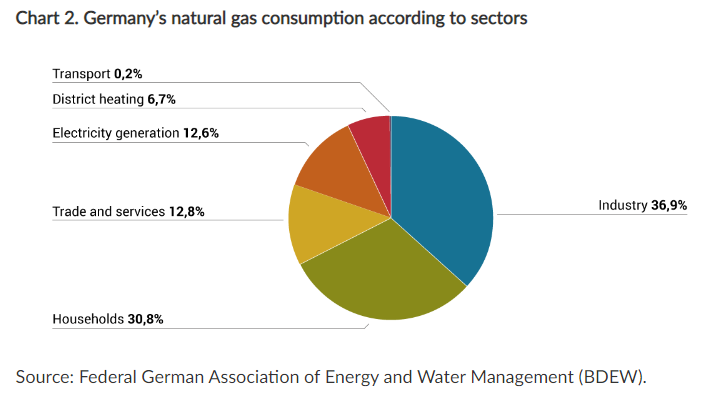The German government announced at the weekend that it would reopen mothballed thermal coal power plants in order to curb natural gas demand used in electricity generation.
German economics and climate minister Robert Habeck outlined this and other measures aimed at curbing gas use amid concern that the country will not have sufficient natural gas stocks to see it through the winter. This follows a sharp fall in gas supplies from Russia in recent weeks which has sparked fears that pipeline flows could be cut-off completely:
“The situation on the gas market has deteriorated in recent days. The missing quantities can still be replaced, and the gas storage tanks are still being filled, albeit at high prices. Security of supply is currently guaranteed. But the situation is serious.”
Germany’s natural gas storage is currently around 56% full, and although in a better position than in previous years the objective is to get to at least 90% by the start of December. Even if this is achieved though Germany may still only be able to cover 2-3 months of normal consumption in the event that Russian supplies are cut completely.
That’s where coal comes in. The announcement suggests that Germany hopes to restart some 10 GW of thermal coal capacity as soon as possible. This is slightly higher than the 8 GW of capacity I’d previously indicated could come on-stream - although this might reflect subsequent decommissioning of coal plants since the end of 2019 (see What price King Coal's return to Europe?).
“With the Replacement Power Plant Availability Act, the gas replacement reserve will be set up for a limited period until March 31, 2024. To this end, power plants that are already available to the electricity system as a reserve are being upgraded in order to be able to return to the market in the short term. In view of the price structure, this means that gas-fired power plants are being squeezed out of the market. Gas contributed around 15 percent to public electricity generation in 2021, but the share is likely to be lower in the first few months of 2022. Measures to reduce gas consumption can increase the power generation capacity by up to 10 GW in a critical gas supply situation, which substantially reduces gas consumption for power generation.”
Now that Germany has dispelled the last coal burning taboo, other European countries also appear to be following in Germany’s path. Neighbouring country Austria also announced that it would convert a gas fired power plant, currently kept on stand-by so that it can burn thermal coal. EU carbon price jumped almost €2 per tonne when the market opened on Monday, but gradually fell back later on in the morning since the details of the thermal coal announcement contained little in the way of surprises. A case of buy the rumour, sell the fact? 1
Despite the focus on cutting natural gas use in electricity generation, it’s worth remembering that the power sector only accounts for around 13% of Germany’s natural gas demand. Industrial demand accounts for almost 37% of the country’s natural gas consumption, household heating follows with 31% of demand, trade and services 13%, with the remainder taken up by district heating and transportation.
Notably, the other main announcement from the Germany government is its plan to introduce incentives aimed at cutting gas demand from the industrial sector. Specifically, Germany plans to launch a gas auction model later in the summer aimed at cutting natural gas consumption and incentivising storage:
“Trading Hub Europe ( THE ), the Federal Network Agency ( BNetzA ) and the BMWK are developing a gas balancing energy product that industrial customers can use together with their suppliers to reduce their consumption in bottleneck situations and make gas available to the market in exchange for remuneration based purely on the energy price.”
The auction plans are currently being finalised so it’s unclear exactly how the program will work. However, it’s likely to take the form of a payment whereby industrial consumers of natural gas are paid to cut demand when prices go over a certain level, or gas storage volumes fall below a certain pre-determined threshold. The upshot is that it should incentivise industrial consumers to increase efficiency so that they can then then take advantage of ‘demand management’ payments when they occur.
Although using thermal coal in power generation results in around double the amount of carbon emissions per unit of energy produced compared with natural gas, the efficiency measures incentivised by the auction could (given the relative importance of natural gas to industry) more than offset the extra emissions from burning coal (see Money to burn: How investors should think about the 'invisible fuel').
It’s understandable that everyone simply focuses on the easily visible sign that Germany plans to burn more coal. But there’s a deeper story there that may mean the impact on carbon emissions, and the resulting demand for carbon allowances is not the one-sided picture it first appears.
https://www.reuters.com/business/energy/austria-revives-coal-fired-power-option-russia-cuts-gas-supply-2022-06-19/





